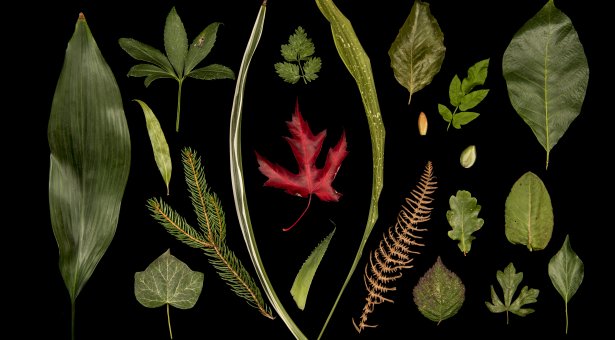Unravelling how plants create a variety of organ shapes

Organ development lies at the heart of developmental genetics, the scientific focus of our research within Genes in the Environment (GEN) research programme.
We sat down with Programme Manager Dr Teresa Penfield to find out what they’re working on and how different plant organs such as leaves, flowers and fruit form their many and varying shapes.
“We are interested in how the genes within plants control the mechanics of growth that lead to different plant shapes and forms.
Starting with the microscopic clusters of cells called organ primordia, how do these develop into sheets of tissue which go on to grow and fold, creating organs of varied shapes and sizes? Can we discover more of the molecular and cellular mechanisms which underly the diversification that we see in, for example, fruit or leaf shape?
We have made some fantastic discoveries since the start of our strategic programme in 2017, providing new insights into this dynamic process.
We have been able to demonstrate that a simple mechanism underlies the formation of both flat and cup shaped leaves, through research on the Carnivorous Bladderwort, Urticularia gibba, which makes cup shaped leaves as traps. We now understand that changes in gene expression between the upper and lower surface of the leaf can lead to differences in shape from a flat leaf through to a cup shaped trap structure.
Plant organs including leaves, inflorescences, and fruit are our main source of food. The tools, skills and knowledge that we have developed in model species will feed into our research to improve UK crops such as Brassicas and wheat that also form part of our GEN research programme. By understanding what controls their shape, our research will contribute longer term to improving crops and global food security.
Understanding how cells cope with the physical stresses posed during growth is also key to developing an in depth understanding of the growth and development process.
We have proposed a new theory to explain how the shape of plant puzzle or epidermal cells, the cells which cover the surface of plant organs, is vital for allowing growth. These cells are an irregular shape which allows them to cover large areas as leaves expand and change shape without being damaged under the pressure.
Unravelling genetic pathways, from the genes themselves and their expression into proteins, followed by modification of these proteins, is vital for developing a complete understanding of plant developmental processes.
Our research involves exploration of a wide range of the molecular and genetic mechanisms which enable plants to develop novel and unusual shapes. For example, we use the unusual heart shaped fruit of the plant Pink Shepherd’s Purse, or Capsella rubella to help us to understand how novel fruit shapes are formed.
We have found that in addition to changes in gene expression, processes such as the modification of the gene products (proteins) initiates a signalling pathway which causes the growth hormone, auxin to be synthesised in a very precise and local way, influencing how the cells expand to ultimately cause the formation of the heart-shaped fruit, characteristic of Capsella species.
As part of our research programme we both develop and use the latest technology. This allows us to answer and explore questions that would previously have been difficult or time-consuming.
The development of computational tools has allowed us to develop new models for growth, including volumetric growth.
In 2019, Dr Richard Smith and his research group joined our scientific programme, bringing with them skills and technology to explore the close interaction between image processing and modelling in an emerging field called Computational Morphodynamics.
New software developed by Richard’s group, called MorphoDynamX, is helping us to tackle questions in plant development that were previously inaccessible. Their expertise in computational analysis of growth dynamics has led to a step-change in our approach towards understanding organ shape and formation for example in fruit.
Technical advances in the development of new genetic tools have also been instrumental in allowing us to explain differences in organ shape. For example, developing new model species such as Capsella and Urticularia have been crucial for allowing us to answer questions on the mechanisms of control of organ shape that previously weren’t possible, with Arabidopsis.”



